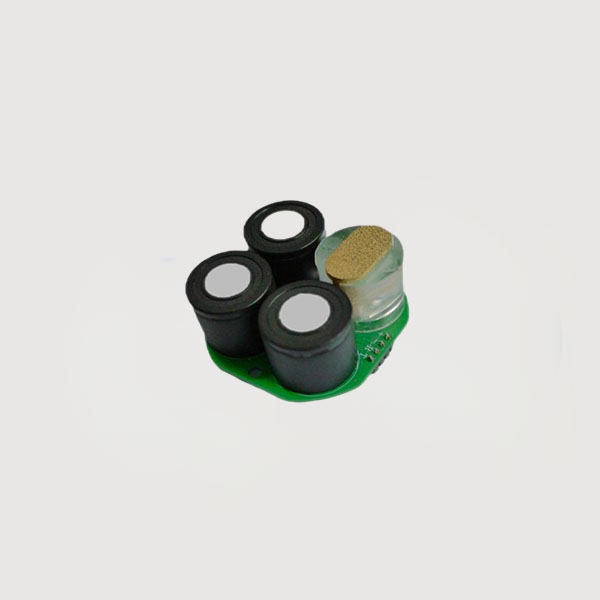

 News
News Industry News
Industry NewsIn response to the needs of environmental protection work, the four-in-one gas detection instruments on the market are becoming more and more diverse. As follows, Tensensor will introduce the four-in-one gas detector and its usage. If you are interested, pls follow us to take a look!
1. Overview of Four-in-One Gas Detector

We also know that it is impossible for a sensor to detect all gases and meet all requirements. The sensors used for various gases and various environments are also different. They can be roughly divided into: sensors for detecting the concentration of toxic bodies and sensors for detecting the explosive concentration of combustible gases.
The sensors used to measure the concentration of toxic bodies are mostly electrochemical sensors, which are sensors that work based on electrochemical principles. The main factor affecting their lifespan is the electrolyte. After 2 to 3 years, the electrolyte of general sensors is consumed and can no longer work normally, so the service life of electrochemical sensors is 2 to 3 years. The sensors used to detect the concentration of combustible gases are mostly catalytic combustion sensors, and their service life is 3 to 5 years.
Confirm the type and concentration range of the gas to be detected: The types of gases encountered in each production department are different. When choosing a gas detector, all possible situations must be considered. If methane and other less toxic alkanes are mostly present, it is undoubtedly more appropriate to choose an LEL detector. This is not only because the principle of the LEL detector is simple and its application is wide, but also because it is easy to maintain and calibrate.
If there are toxic substances such as carbon monoxide and hydrogen sulfide, it is necessary to give priority to choosing a specific gas detector to ensure the safety of workers. If there are more organic toxic and harmful gases, considering that the concentration that may cause poisoning is low, such as aromatic hydrocarbons, halogenated hydrocarbons, ammonia, ethers, alcohols, fats, etc., you should choose the photoionization detector introduced in the previous chapter instead of using the LEL detector to deal with it, because it may cause casualties. If the gas types cover the above types of gases, choosing a composite gas detector may achieve twice the result with half the effort.
2. What are the principles of the sensors used in the four-in-one
| Detection gas | CO,H2S,O2,CH4 |
| Detection range | CO: (0~1000)ppm H2S: (0~100)ppm O2: (0~30)% vol CH4: (0~100)% LEL |
| Resolution | CO: 1 ppm H2S: 1 ppm O2: 0.1% vol CH4: 1 % LEL |
| Working Voltage | (3.5~5) V |
| Working Current | <100 mA |
| Response time | <30 s |
| Output method | UART output (2.8V Level) |
| Temperature/Humidity | Working temperature: -20℃~50℃ Working temperature: 15% RH~90% RH Storage temperature: 0℃~20℃ |
| Life | 2 years(in air) |
| Accuracy | CO: ±10% FS H2S: ±10% FS O2: ±4% FS CH4: ±10% FS |
3. How to use the four-in-one gas detector
1. Before entering the working area, safety confirmation must be carried out; only after confirming that there are no safety hazards can you enter the working surface for testing. When the detection instrument alarms, you should evacuate the working surface in time and force ventilation for more than half an hour before testing. The tester must write the test results of the work site on the confirmation sheet and be responsible for the accuracy of the test data.
2. After the test, confirm and flip the warning sign according to regulations. The warning sign should be hung in a reliable place at the entrance of the work site. Other personnel are not allowed to flip the warning sign, and avoid being affected by other reasons; the staff is allowed to enter the work site only when they see the green face. The on-duty production supervisor should supervise and inspect the work of the on-duty test personnel to ensure the effective implementation of this regulation.
3. Place the probe in the environment to be tested. When there is a leak of the gas to be tested, the value displayed on the concentration becomes larger. When it exceeds the alarm setting value, the alarm indicator light is on and an alarm sound is issued. When the probe moves to the leak source, the value displayed on the concentration display of the four-in-one gas detector is.
4. How to use the four-in-one gas detector? When the four-in-one gas detector prompts that the battery is low, it means that the battery is running out of power. You should turn off the power in time and use the charger to charge the battery. Each charging time is 10-14 hours!
5. Charging method: Plug the power charger into the AC220V power socket, and then plug the charging plug into the charging socket of the detector, and then turn on the power switch of the four-in-one gas detector to charge the detector. The green working light is on, the battery light flashes, and the display shows that after charging is completed, turn off the power switch and unplug the charger.
6. When testing, the number of inspectors should be more than two people, one person operates and the other monitors. Keep a certain distance between the front and back, and single-person operation is strictly prohibited. When using the four-in-one gas detector, you must comply with the detection requirements, perform gas detection work diligently and responsibly, and keep in mind the detection system, detection methods and control standards.
4.Product recommendation

Choose Tensensor: Selling products to you does not mean the end, but the beginning of our providing better services. If you have any needs, please feel free to leave us a message:
Email: [email protected]
Tel/WhatsApp: +86 18335818384